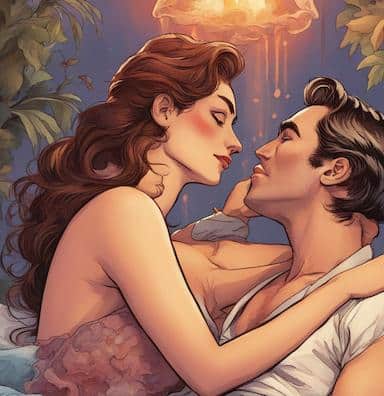In any good romance story, the protagonist’s journey to find love is often accompanied by various obstacles and challenges. One of the most critical elements that can make or break a romance plot is the antagonist, a character who creates conflict and opposes the protagonist’s desires. A well-crafted antagonist can add depth and tension to the story, making it more engaging and enjoyable for readers. However, creating an effective romance antagonist is no easy feat.
Crafting a Romance Antagonist

- Give a compelling backstory: A great antagonist is more than just a one-dimensional villain. To create a character that readers can truly empathize with and understand, it’s essential to give them a backstory that explains their motivations and actions. Perhaps they experienced heartbreak or betrayal that makes them resistant to love or have a traumatic past that has shaped their worldview. By providing a glimpse into the antagonist’s history, readers can begin to see them as more than just an obstacle to the protagonist’s happiness.
- Make the antagonist relatable: While the protagonist is the character readers are rooting for, a good romance antagonist should be relatable in some way. They should possess qualities that readers can identify with or understand, even if they don’t agree with their actions. Perhaps they are fiercely independent, or they value career success above all else. By creating an character that readers can relate to on some level, you can make them more engaging and help readers see the story from multiple perspectives.
- Create a complex relationship: The relationship between the protagonist and the antagonist is often the heart of a good romance story. While it’s tempting to create a straightforward “good vs. evil” dynamic between these characters, a more complex relationship can make the story much more compelling. Perhaps the character is an ex-lover, a friend with benefits, or a childhood friend who harbors secret feelings for the protagonist. By creating a nuanced relationship between these characters, you can add depth and tension to the story that readers will find fascinating.
- Reveal important truths about the protagonist: The antagonist can be an excellent tool for revealing important truths about the protagonist’s character. Perhaps the antagonist challenges the protagonist’s beliefs or exposes their vulnerabilities in a way that no other character can. By using the character to reveal important truths about the protagonist, you can create a more meaningful and impactful story that resonates with readers.
- Give the antagonist an internal conflict: A good antagonist is often struggling with their own internal conflict, which creates tension and complexity in the story. Perhaps they have feelings for the protagonist but feel unworthy of their love, or they are torn between their loyalty to the protagonist and their own desires. By giving them their own internal conflict, you can create a character that is both relatable and engaging, making the story much more captivating for readers.
- Show growth and development: While the protagonist is typically the character who undergoes the most significant transformation in a romance story, the antagonist can also experience growth and development. By showing the antagonist’s evolution, you can create a more dynamic and multi-dimensional character that readers can’t help but be invested in. Perhaps they learn to let go of past hurts and open themselves up to love, or they realize that their actions were misguided and seek redemption.
Crafting a dynamic romance antagonist requires careful thought and attention to detail. By giving the them a compelling backstory, making them relatable, creating a complex relationship between the protagonist and antagonist, using the them to reveal important truths about the protagonist, giving the them an internal conflict, and showing their growth and development, you can create a character that readers will love to hate.
While the antagonist is the source of conflict and tension in the story, a well-crafted character can elevate the romance plot and make it much more engaging and enjoyable for readers. With these tips and strategies, you can create a dynamic and multi-dimensional characters that will keep readers on the edge of their seats, rooting for the protagonist’s happily ever after.
Keywords: Romance, Story, Backstory, Relatable, Relationship, Character Development, Conflict, Tension, Growth, Transformation, Internal Conflict, Redemption, Nuance, Compelling.
Check out our Novel Writing Workbooks
Check out Little Tree Food Forest for articles on food forests and homesteading.
Check out FoodieScapes for articles on growing, fermenting and preserving food
Check out StoryScapes.World for articles on writing.
Subscribe to our newsletter to get information delivered to your inbox on how to write a book, outlining your novel, keeping journals, marketing your novel, self-publishing, writing poetry and more.










